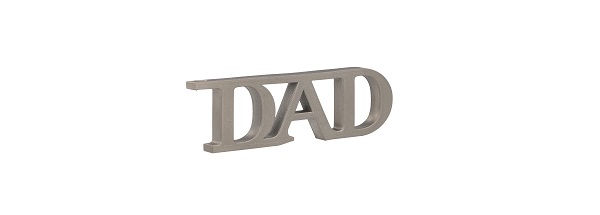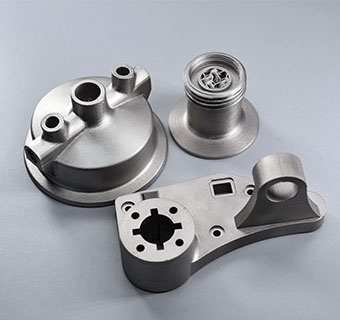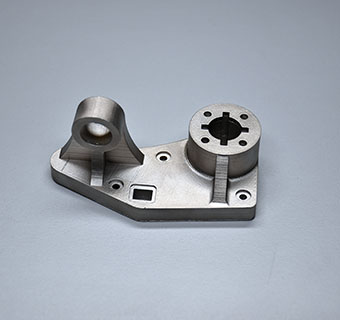Ultrafuse 316L Stainless Steel: Available for your next 3D printing projects!
Posted By Lucie Gaget on Jun 3, 2020 | 0 comments
Ultrafuse Stainless Steel 316L is now available on our online 3D printing service for your next 3D printing orders! If you are looking for a cost-effective metal manufacturing solution to create your metal projects, this BASF Ultrafuse 316L Stainless Steel might be the perfect choice.
We have more good news for you! During June 2020, all orders above 100€ / $ will get a free father’s day keyring bottle opener, 3D printed with our Ultrafuse 316L material!
What is Ultrafuse 316L?
Ultrafuse Stainless Steel 316L is a new industrial-grade metal filament for professional uses. Created by BASF, this new Ultrafuse 316L filament is composed of 90% stainless steel and 10% polymer binder. This material is 3D printed using Fused Deposition Modeling or FDM technology.
Ultrafuse 316L is one of the most affordable materials for metal 3D printing. It also offers impressive mechanical properties and low cost of production.
Why should you start using Ultrafuse 316L Stainless Steel?
Metal 3D printing is becoming a really interesting metal production technique for various industries, such as automotive, aerospace, and many more. Why? Implementing metal 3D printing is actually offering new opportunities to companies in terms of design and flexibility. Metal parts are resistant, and materials such as Ultrafuse 316L Stainless Steel can be used for mechanical purposes, and for objects where toughness and resistance are required. One of the things limiting the adoption of metal 3D printing is often the price, but some affordable options are starting to be available, as we can see with the Ultrafuse 316L Stainless Steel.
Ultrafuse 316L is especially interesting for demanding industries such as medical, automotive, or aerospace.
What kind of parts can be printed using Ultrafuse 316L?
It can be used for functional prototypes, mechanical parts, but also pipes, pumps, and valves for chemicals, gas, and oils. Additionally, you can also 3D print non-magnetizable parts or parts for tooling and mold inlays with near-surface cooling.
Regarding the size of the parts you can print with this material, extensive testing and experience have shown that parts with a bounding box of 60 x 60 x 60 mm have the highest success rate and is suggested. The minimum wall thickness is 1 mm.
What are the benefits of Ultrafuse 316L?
The main benefit of Ultrafuse 316L is cost-effectiveness. It’s a great material to produce competitive, but fully functional end-parts. As the parts are 3D printed, you might also save lot of time over traditional manufacturing techniques, especially when it comes to low-volume production.
3D printing with Ultrafuse 316L will also give you new design freedom. That applies especially to making your parts lighter. How? Thanks to honeycomb structures, for example. With this filament, you can fill your objects with those structures or even hollow it resulting in less material usage which is cheaper and produces lighter parts.
Another benefit of Ultrafuse 316L is its high corrosion resistance! If you are looking for a really resistant metal material, Ultrafuse 316L might perfectly fit your needs.
Are you ready to give Ultrafuse 316L a try? Upload your 3D model on our online 3D printing service and get your instant quote for free. At Sculpteo, we will assure your part will be accurate and we maintain competitive lead-times.
Do you have any other questions about this Ultrafuse 316L metal material? Don’t hesitate to contact our sales team, our experts are here to help make the most of 3D printing technology.


 Connect with Google
Connect with Google Connect with Facebook
Connect with Facebook


